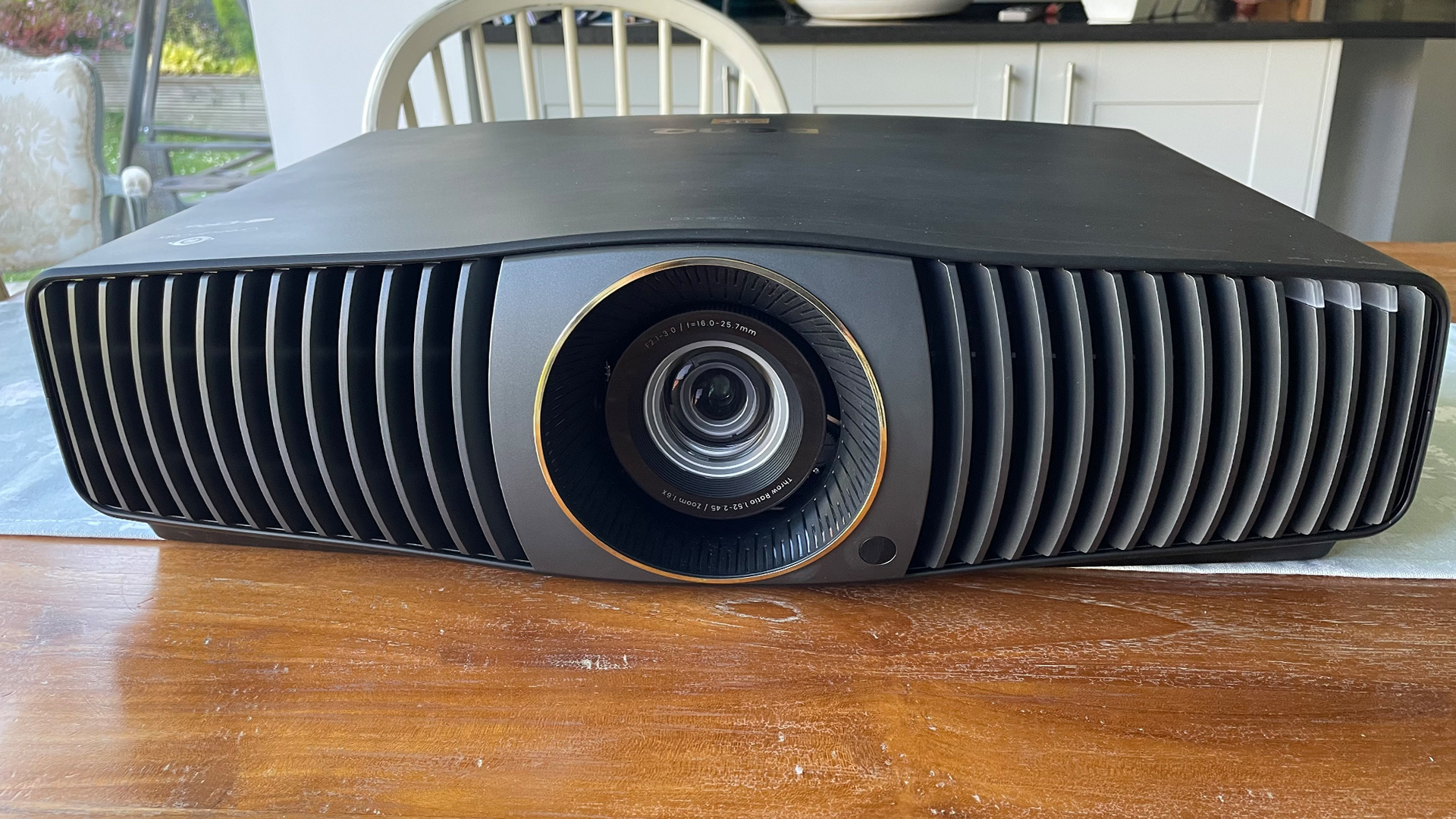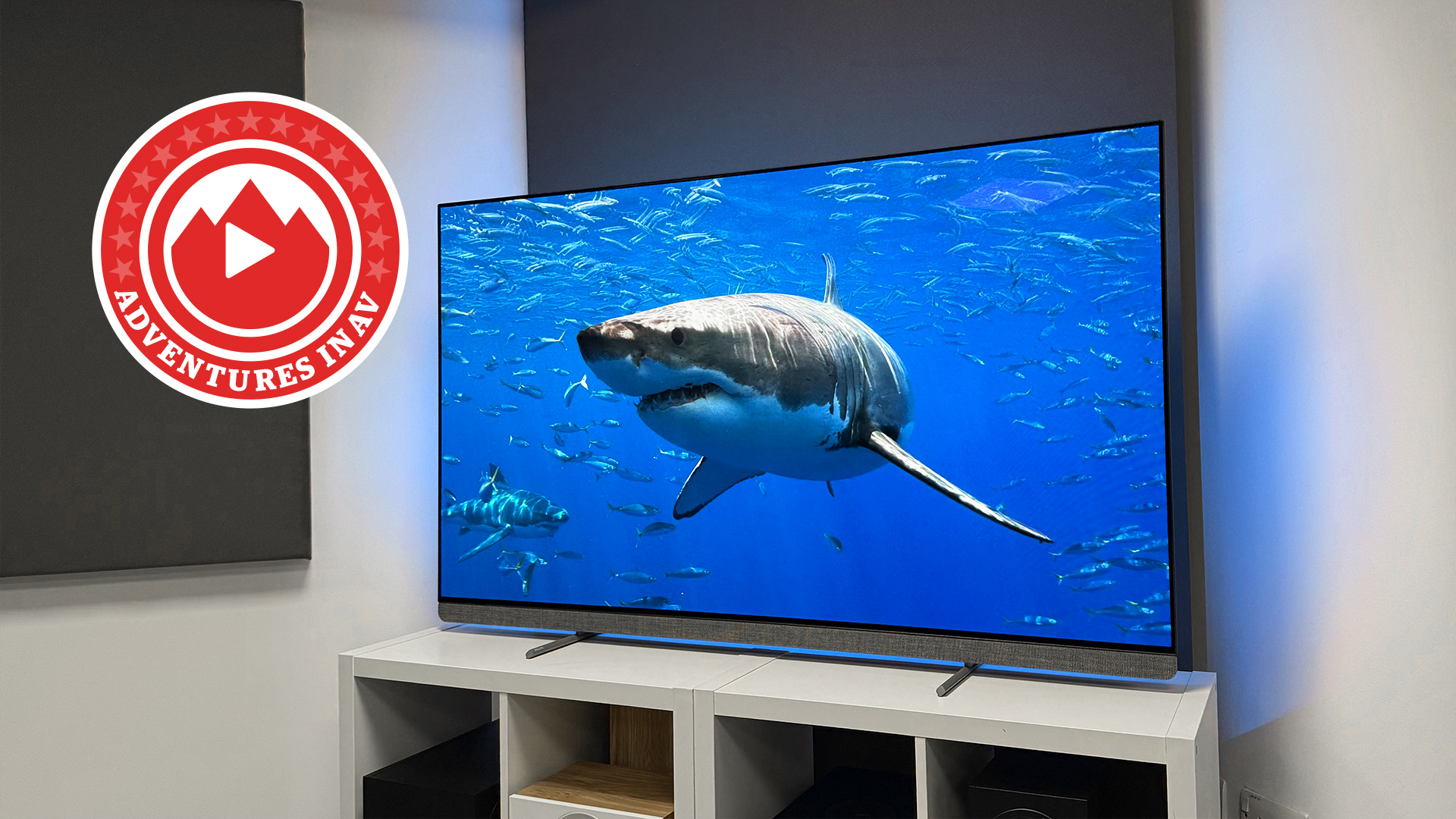What Hi-Fi? Verdict
After a little tweaking, the BenQ W5800’s single-minded focus on home cinema pays off handsomely
Pros
- +
Outstanding colour performance
- +
Excellent sharpness and detail
- +
Serious focus on movies
Cons
- -
High gaming lag
- -
Needs adjustment to look its best
- -
Minor rainbow effect
Why you can trust What Hi-Fi?
The whole concept of consumer projectors originated around the idea of creating a cinema in your home, but things are no longer that ‘simple’. These days, truly dedicated home cinema projectors (at least those that don’t cost a small fortune) are starting to feel like a niche exception to a more general ‘home entertainment’ norm where gaming, portability and smart features seem to be classed as at least as important as immersive picture quality.
For us and many other true home cinema lovers though, projectors are still the ultimate movie machines. So when the increasingly rare opportunity came along to check out a true and serious mid-range home cinema projector in the shape of BenQ’s W5800, we were on it faster than you could say “Hollywood”.
Price
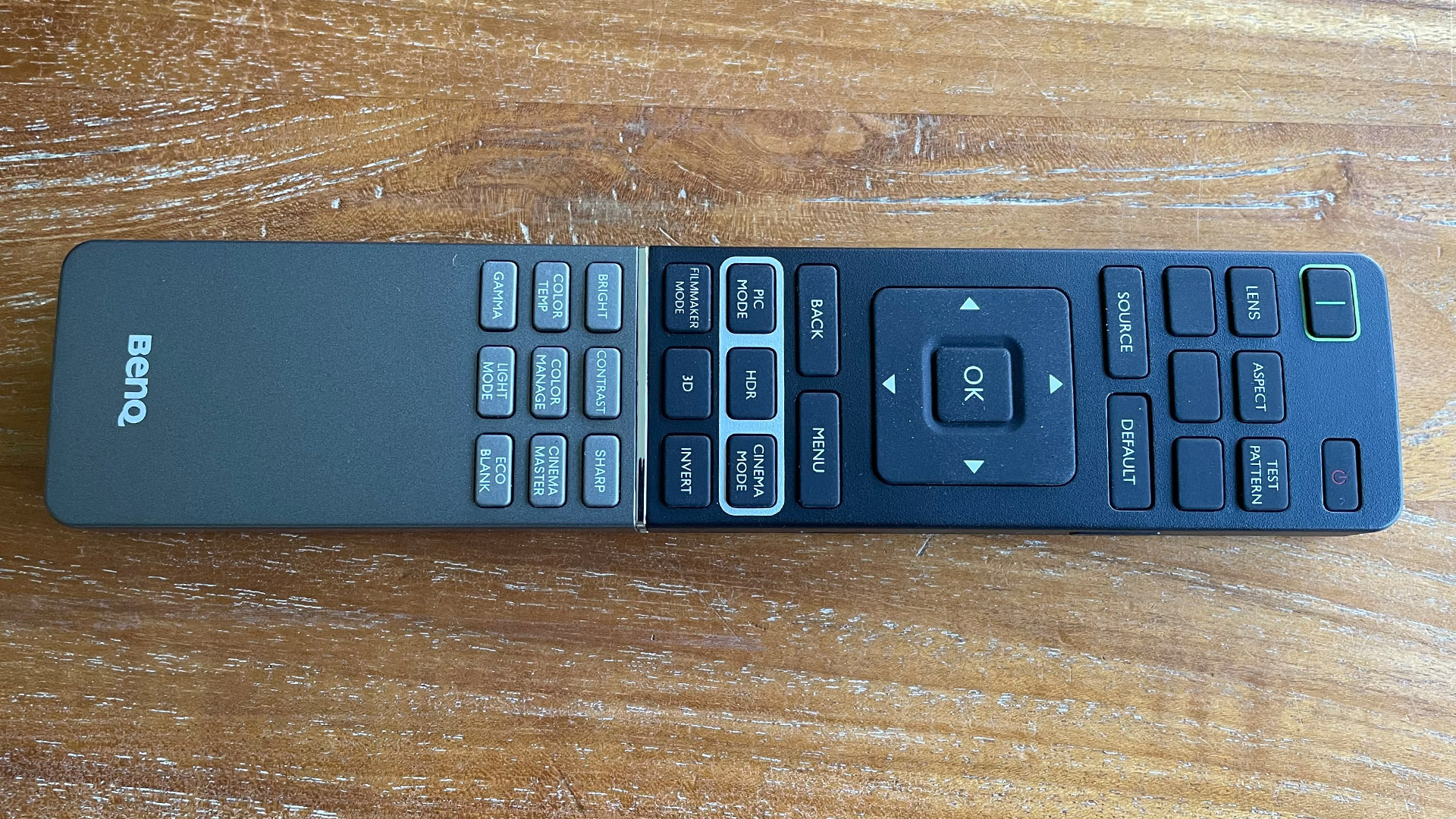
The BenQ W5800 costs £4599 in the UK, $5999 in the US and $8999 in Australia. That puts it in pretty premium territory in a world in which 4K, HDR-capable projectors can now be routinely bought for around a third of that price.
On the other hand, though, those W5800 prices actually don’t look excessive at all if considered against the sort of high-end, often near or over five-figure projectors that increasingly occupy the dedicated home theatre projector world. So if the W5800 can deliver on its specific movie focus, it might end up feeling like quite a bargain for something that’s aiming to form the heart of a dedicated home cinema room.
Design
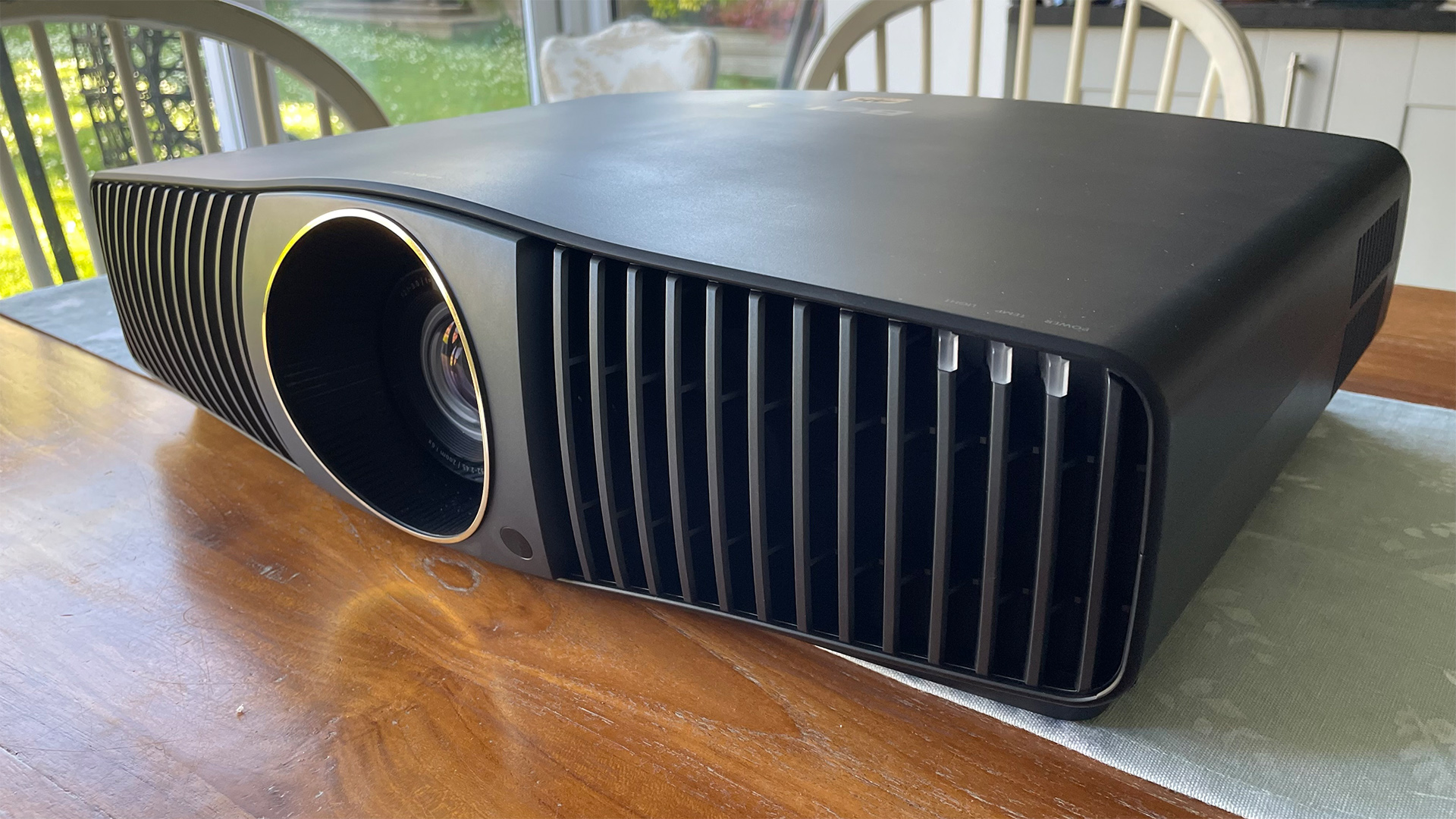
As with many projectors aimed primarily at fixed installations in dedicated home cinema rooms, the W5800 is quite a unit. At 146 x 53 x 39cm (hwd), its footprint is significantly bigger than your average living room model – and it’s heavy, too. While not coffee table friendly, though, the W5800’s chunky and weighty black bodywork bodes well for its movie performance. Especially as the W5800 uses much of its bulk to keep running noise down to an easily ignored maximum of 30dB, even when watching punchy high dynamic range content.

Projector type Laser DLP
Processing CinematicColor technology, Dynamic Tone Mapping, Dynamic Black technology, Local Contrast Enhancer
Screen size Up to 200 inches
Native resolution 4K
HDR support HLG, HDR10, HDR10+
Dimensions (hwd) 15 x 53 x 39cm
BenQ’s projector wears its size well, too. Its corners are rounded to give it a softer, more domesticated look, while the centrally mounted lens is recessed in a large outlet decorated with a fetching gold circular edge and attractive textured striations running from front to back. The front artfully combines large curved slats to each side of the lens to help heat from the laser lighting to escape, while the top edge enjoys a gently arced appearance that contributes to an attractive, vaguely elliptical shape. Build quality is excellent throughout, too.
The W5800 is accompanied by a better than average remote control. Its large size, spaciously and logically organised buttons and backlighting all help to make it easy to use even in the sort of pitch black room you’ll likely have such a projector installed in, while its heft and finish both feel suitably premium.
The latest hi-fi, home cinema and tech news, reviews, buying advice and deals, direct to your inbox.
Features
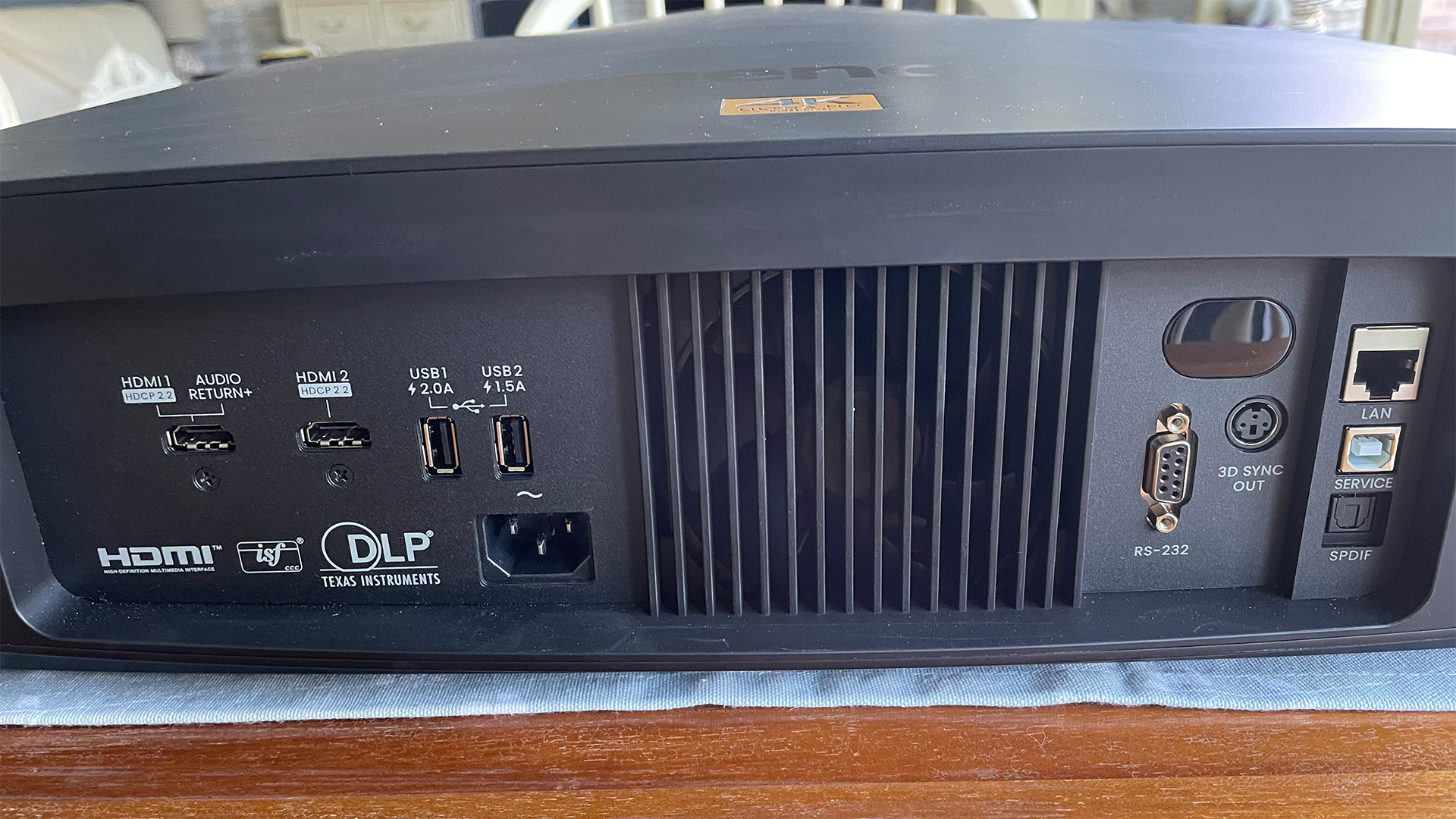
Just because the BenQ W5800 is focused on home cinema rather than more general home entertainment doesn’t mean it doesn’t still have plenty going on.
Starting with the basics, though, it’s a DLP projector illuminated by a laser lighting system. It claims a peak brightness of 2600 ANSI Lumens, and a 4K resolution thanks to Texas Instruments’ XPR technology (which uses DLP’s digital mirrors to create more than a single pixel each for every image frame).
The projector’s 4K claims are bolstered, too, by its use of a 14-element, 7-group lens that uses glass rather than plastic throughout to help maintain more sharpness and detail.
The W5800’s claimed brightness might not sound particularly spectacular in a projector world where claimed light outputs of above 3000 lumens and more have become quite common. Don’t forget, though, that unlike most of those ultra-bright projectors, this one is specifically designed to be used in as dark a room environment as you can achieve.
We’ve also become painfully aware over the past couple of years that projectors that go for it on the brightness front in a bid to better reproduce HDR content tend to struggle with delivering convincing black tones, thereby robbing the image of overall contrast.
In other words, 2600 Lumens sounds to us like it has the potential to deliver an ideal balance between HDR punch in a dark room and black levels good enough to make all those dark horror movie sequences we love so much look terrifyingly convincing.
Helping to get the maximum value out of the 2600 Lumens of brightness, too, is the W5800’s impressive ability to deliver a full 100 per cent of the so-called DCI-P3 colour spectrum typically used in the mastering of HDR content without needing to call in a special filter. Wide colour filters on projectors invariably make images much darker, so being able to enjoy a full range of colour when watching HDR without having to sacrifice any brightness sounds very promising indeed.
The W5800’s HDR features don’t end there. For starters, it adds playback of the premium HDR10+ format, with its extra scene by scene picture data, to the basic HDR10 and HLG formats. A Local Contrast Enhancer algorithm, meanwhile, divides incoming pictures up into more than 1000 separate analysis zones to figure out the most effective image settings to use, while dynamic tone mapping adjusts the values of HDR content so that they’re optimised to the projector’s capabilities. Purists may not like the sound of this, but it’s a common – and often very effective – practice in the TV world. And, actually, projectors have the potential to benefit from it even more, given that HDR was really designed with bright TVs rather than projectors in mind.
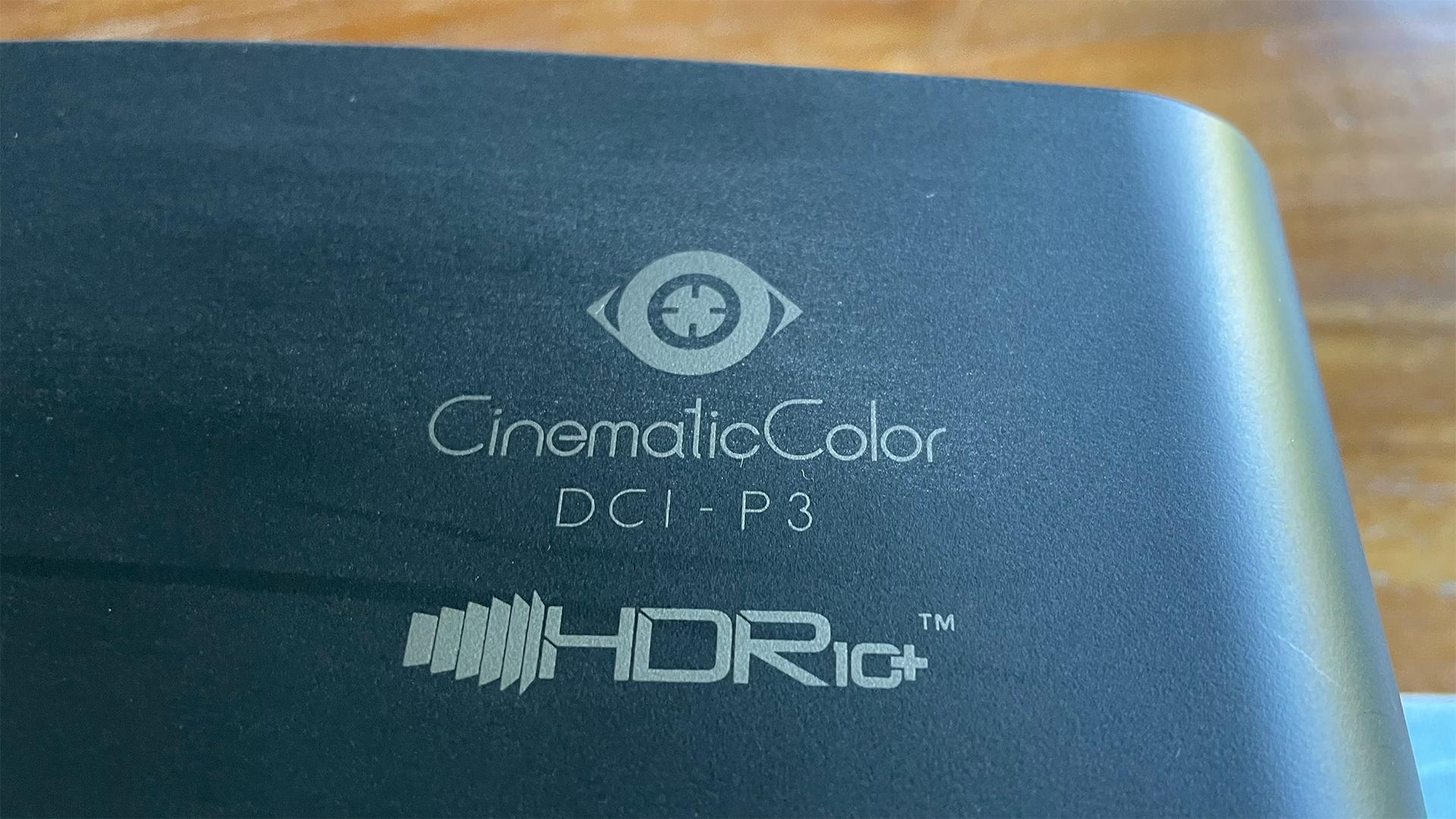
The W5800 controls the amount of light emitted by its laser lighting system as part of its advanced HDR playback calculations, as well as providing an array of manual adjustment tools so expansive that the projector fully supports Imaging Science Foundation calibration if you want to get your fancy new projector delivering as accurate an image as possible.
It probably won’t help the ISF calibration business, though, that every W5800 actually ships with a factory-calibrated mode that’s confirmed by a certificate in its box to achieve greyscale results so accurate that no human eye will be able to detect any errors.
Connections are decent for a projector devoted to home cinema, but a bit disappointing for gamers. Two HDMIs lead the way, but while they’re capable of 4K at 60Hz in HDR and 120Hz in 1080p, there’s no support for either VRR or, worse, a low input lag mode. This latter limitation leaves you trying to game through 130ms of lag with 60Hz titles – enough to make first-person shooter games essentially unplayable and even exploration games feel sluggish.
As well as not really catering for gaming, the BenQ W5800 doesn’t carry any built-in speakers or smart features. The projector makes no apologies, though, for its home cinema focus, so in the end, while more advanced gaming support in particular is always nice, if the W5800 does well enough with films to be the devoted home cinema machine it claims to be, nobody can fairly criticise it for not being anything else.
Picture
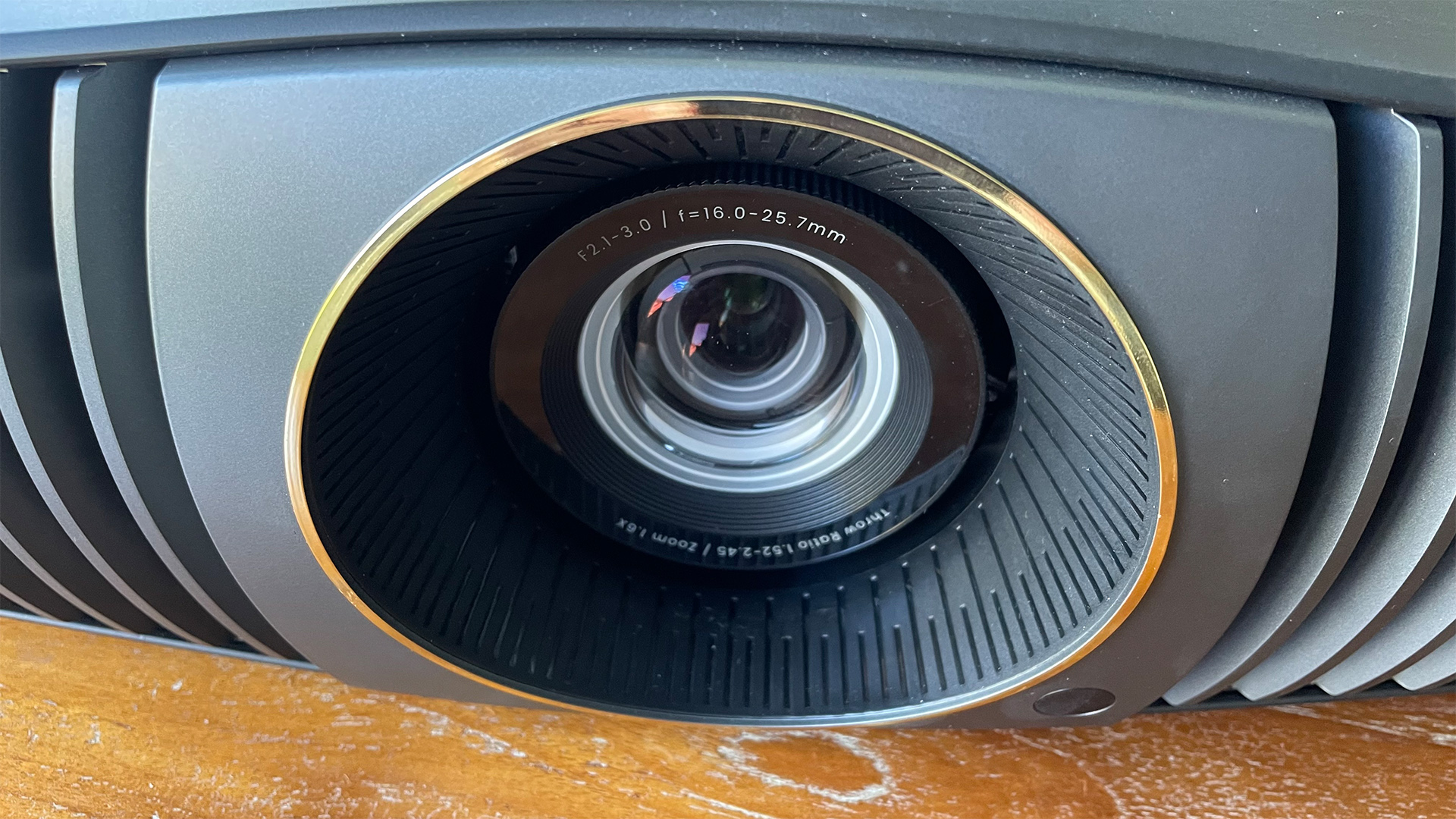
The W5800 sets a promising tone right from the off by being really easy and flexible to set up. There’s a substantial 1.6x level of optical zoom and a healthy amount of optical image shifting to left and right or up and down. All these adjustments are motorised, too.
The first thing that hits us about the W5800’s pictures – and ends up being the main reason for its five-star score – is its colour. Its ability to cover the whole DCI-P3 colour spectrum without a brightness-reducing filter means HDR pictures look blisteringly rich and vibrant. So much so that the 2600 ANSI Lumens brightness claim feels ridiculously conservative – especially in the sort of dark room environment the W5800 is unapologetically designed for.
It’s not just the intensity and range of the W5800’s colours with HDR sources that grabs our attention, either. Crucially for a home theatre projector, there’s also enough refinement in the colour presentation to ensure that colours always feel natural and balanced – even in the projector’s relatively vivid presets. In fact, far from making colours look cartoonish or forced, the W5800’s brightness and intensity actually makes colours look more realistic by adding more volume to the healthy saturations.
The W5800 also manages to retain more vivid saturations in very dark picture areas than the vast majority of other projectors (and, actually, quite a few TVs), again without this vibrancy succumbing to imbalances or common HDR colour issues such as blend ‘striping’ or noise.
The only area where the BenQ W5800’s colour isn’t blisteringly brilliant out of the box is black tones. These are infused with a little too much greyness during HDR playback, as the projector tries a bit too hard – certainly harder than it needs to – to infuse HDR pictures with as much brightness as it can.
The level of greyness hanging over dark scenes isn’t as severe as it is with some other recent HDR projectors we’ve seen, but it actually stands out more than it might on a lesser projector because of the colour prowess elsewhere. Happily, though, it’s possible to sort this issue out with a few simple picture tweaks: specifically, reducing the HDR Brightness setting, activating the Dynamic Black feature, and sticking with the Low setting for the provided Local Contrast Enhancement feature. The resulting image isn’t quite as bright or dynamic looking as it is in the projector’s default presets, but black levels are deeper and more neutral, while those brilliant colours still look excellent.
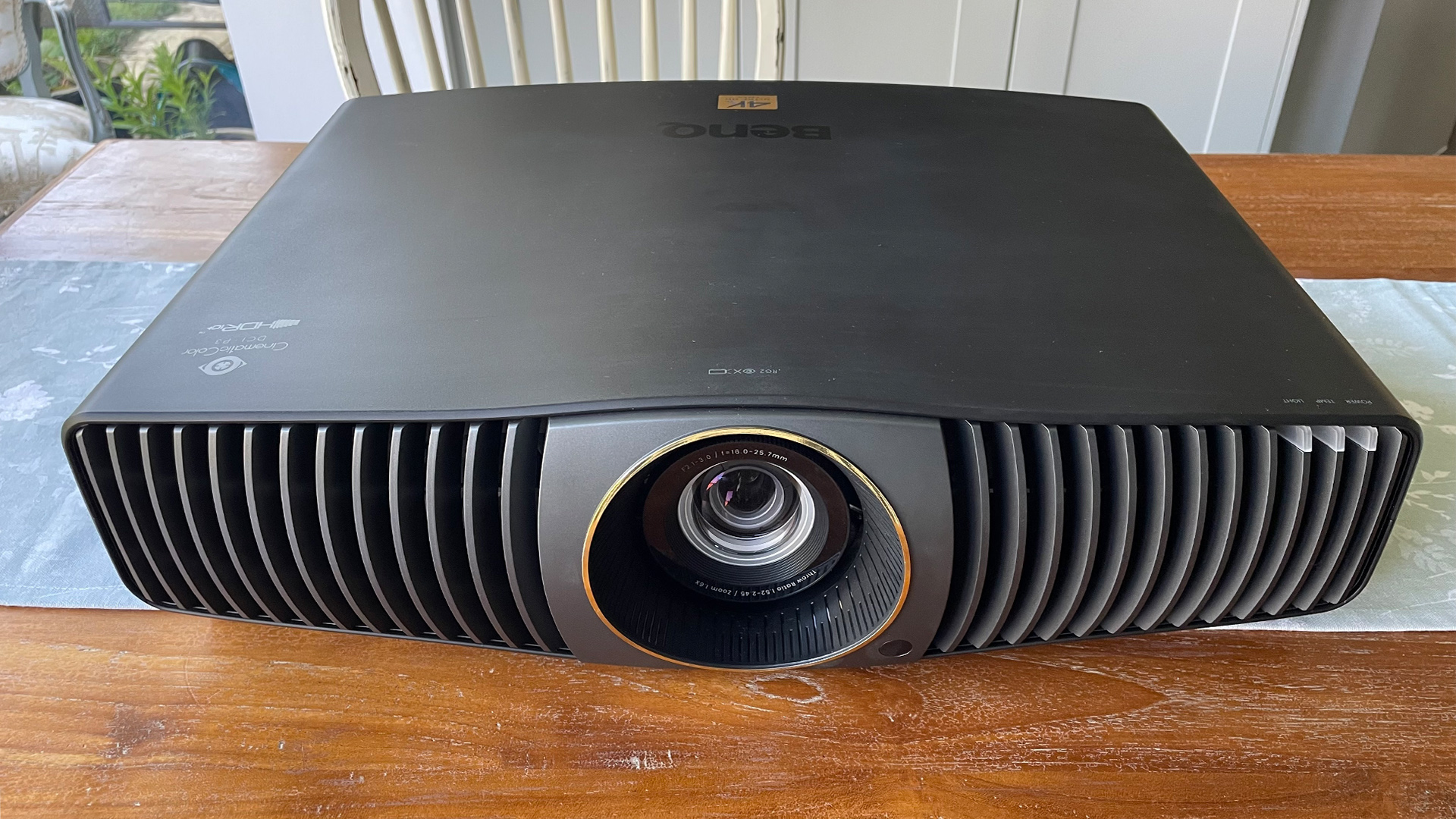
The W5800’s light management is good enough, too, to ensure that dark scenes after tweaking still retain enough shadow detail to avoid looking hollowed-out or flat. The light management does its work, too, without causing any obvious instability in the image’s core brightness level.
There are a couple of projectors out there in more or less the W5800’s ballpark that deliver better black levels. But Sony’s VPL-XW5000ES is substantially less bright than the W5800 and costs a little more, while JVC’s DLA-NP5 is also much less bright and costs a lot more. Of course, black depth and brightness are just two of many factors affecting a projector’s picture performance, but they’re interesting ways to compare these three home cinema titans.
It’s worth adding, while we’re talking about the W5800’s handling of dark scenes, that black levels actually look great out of the box with SDR sources, even if you stick with the projector’s default presets. The W5800’s colour subtleties also continue to mesmerise with SDR images.
There’s still easily enough brightness in the W5800’s SDR and, especially, HDR images after improving its black level performance, too, to retain a stronger sense of contrast than high brightness projectors typically manage. In fact, while the W5800 obviously can’t provide any truly localised brightness management, its dynamic tone mapping system, if you opt to use it, handles HDR so intelligently that the highest brightness peaks of both predominantly dark and bright shots shine with what feels like real HDR intensity. They do so, too, without losing distracting amounts of subtle shading information.
The W5800 also lives up to its 4K resolution claims. The most pristine 4K Blu-rays in our collection, such as Top Gun: Maverick and Blade Runner 2049, look suitably packed with texture, detail and sharpness – even when pushed towards the outer edges of the W5800’s maximum 200-inch image size. And while it looks its best with 4K sources, the W5800’s picture engine also proves strong enough to make HD sources look cleaner and crisper at large screen sizes than you’d expect them to on a regular HD-resolution projector.
The clarity of the W5800’s pictures doesn’t crumble when there’s motion to handle, either. Judder with the 24p feeds a home theatre projector like this will spend the vast majority of its time playing doesn’t look exaggerated, and we don’t feel aware of any blur or lag with either camera pans or objects moving within the frame.
Going in search of other issues with the W5800 beyond the slightly grey out-of-the-box black colours and laggy gaming experience, really the only other thing we can come up with is some minor rainbow effect – a bi-product of DLP projection that can cause stripes of pure colour to flit over bright parts of the picture. Even this issue, though, is relatively rare and subdued by the standards of the DLP projection world at large.
Verdict

If you’re in the market for a serious movie projector for a dedicated home cinema room, the BenQ W5800’s class-leading colour delivery and impressive contrast-boosting set-up flexibility means there’s finally a compelling rival at this level for Sony’s awesome VPL-XW5000ES.
SCORES
- Picture 5
- Build 4
- Features 4
MORE:
Read our review of the Sony VPL-XW5000ES
Also consider the JVC DLA-NP5
Read our Epson EH-LS12000B
Best projectors: Full HD, 4K, and short-throw
What Hi-Fi?, founded in 1976, is the world's leading independent guide to buying and owning hi-fi and home entertainment products. Our comprehensive tests help you buy the very best for your money, with our advice sections giving you step-by-step information on how to get even more from your music and movies. Everything is tested by our dedicated team of in-house reviewers in our custom-built test rooms in London, Reading and Bath. Our coveted five-star rating and Awards are recognised all over the world as the ultimate seal of approval, so you can buy with absolute confidence.
